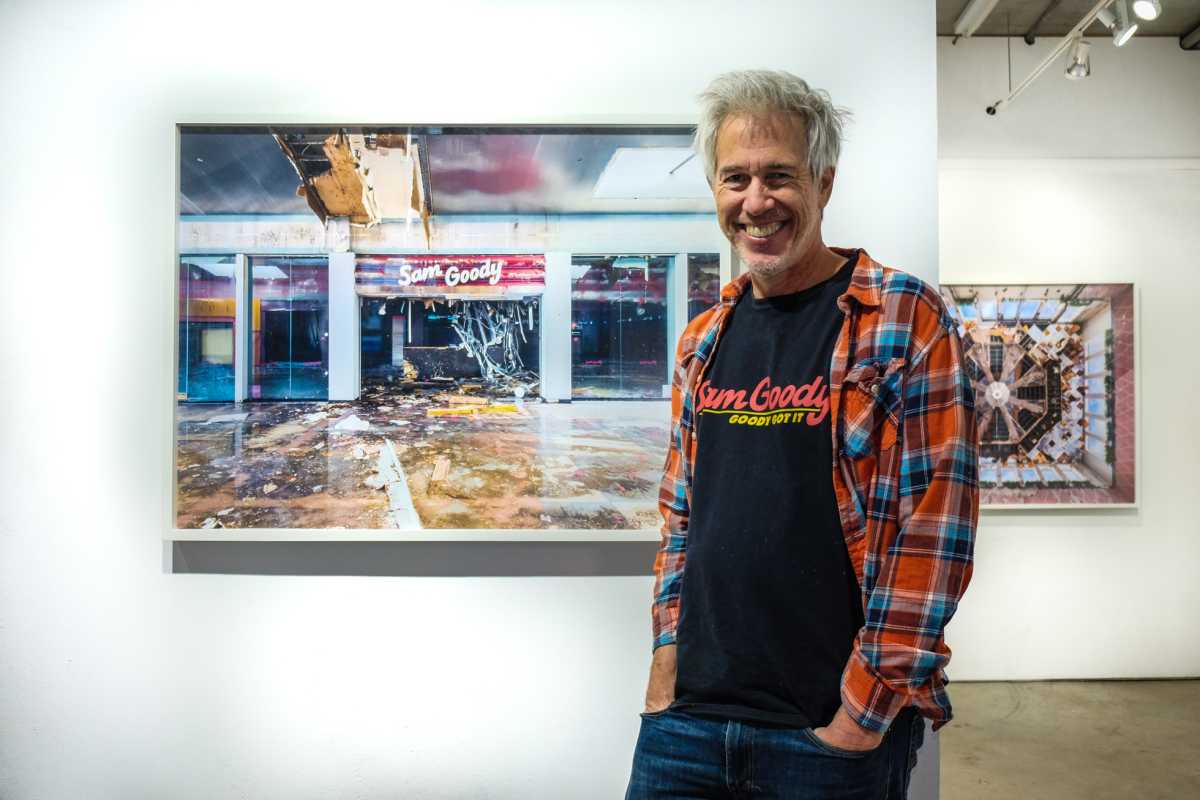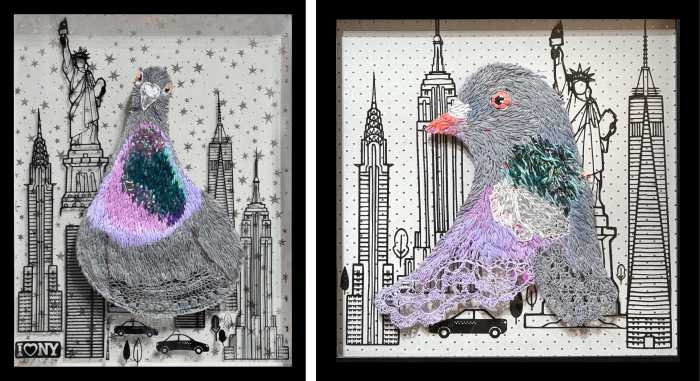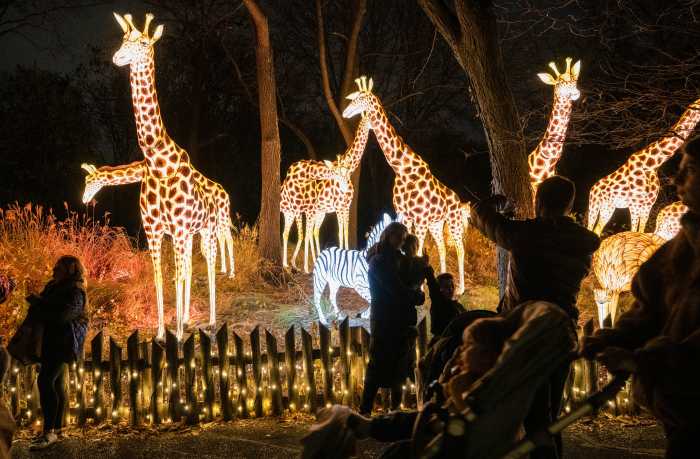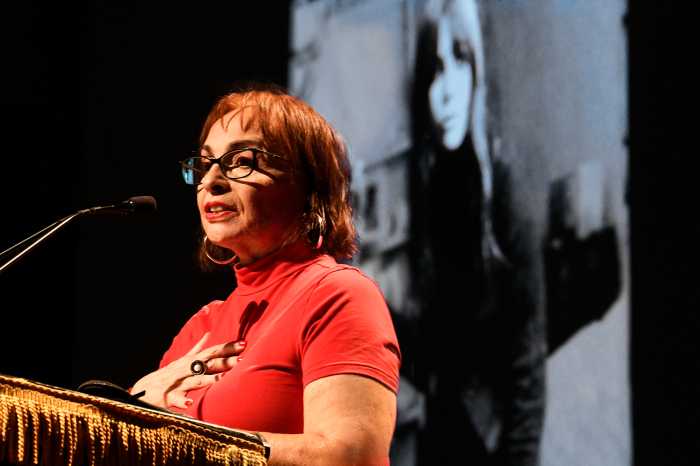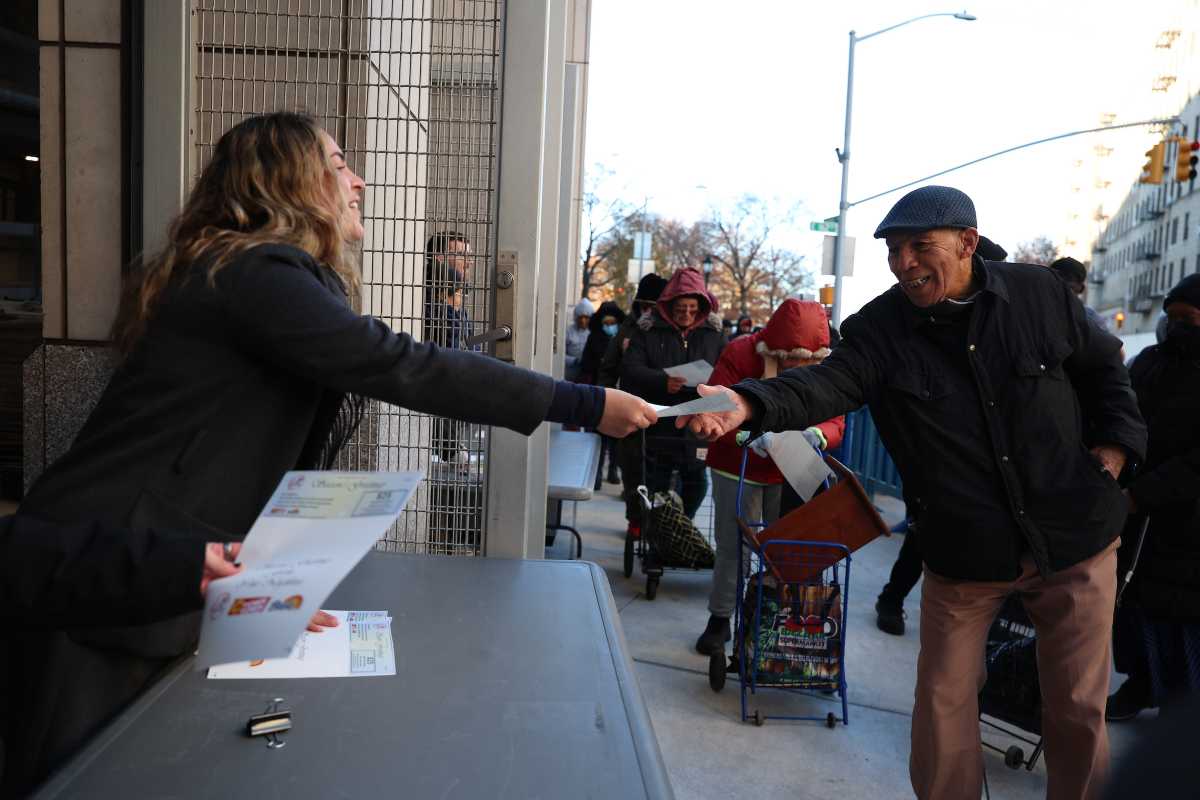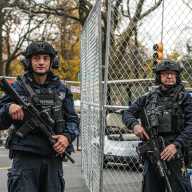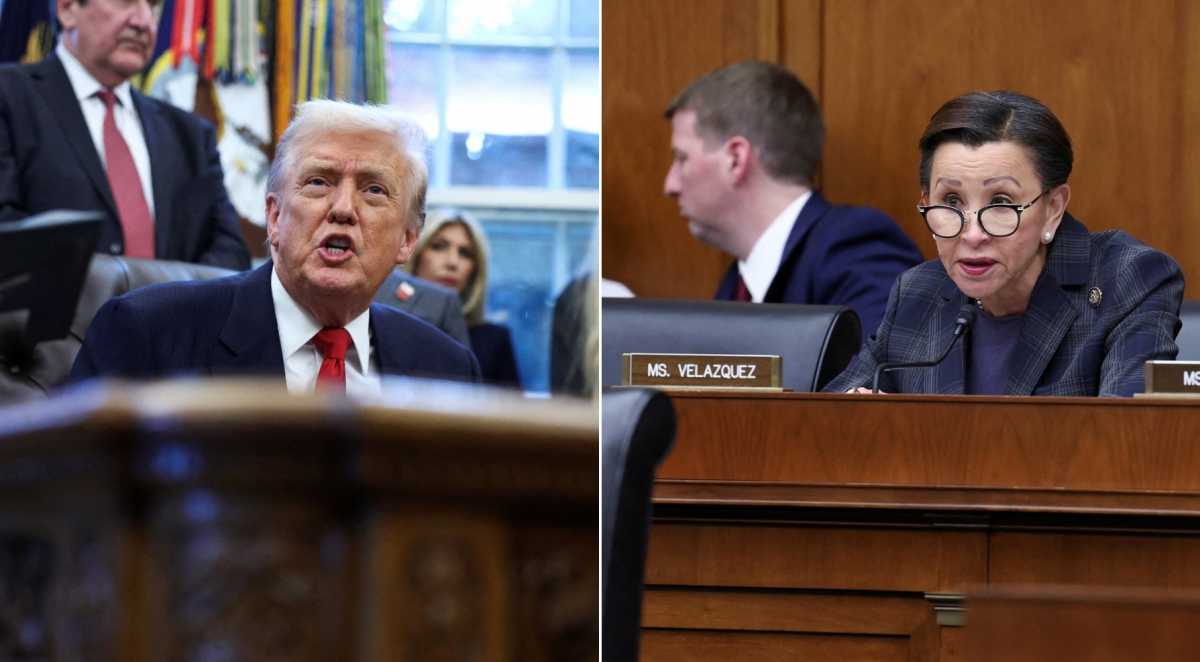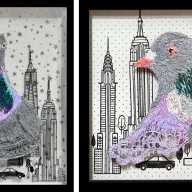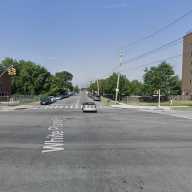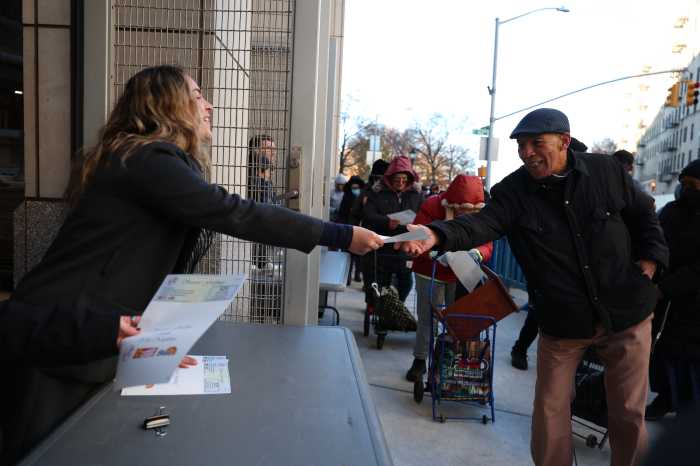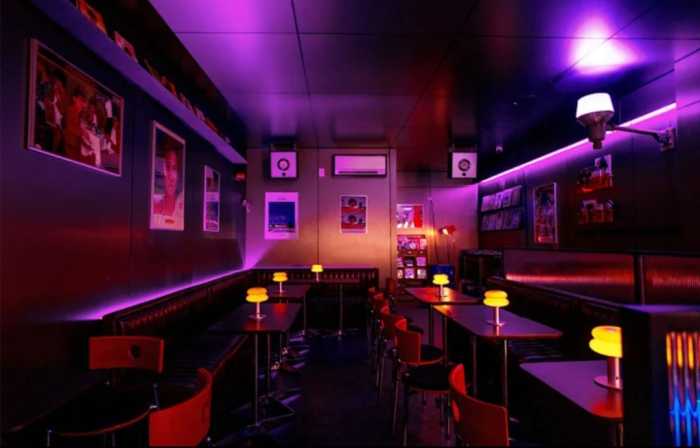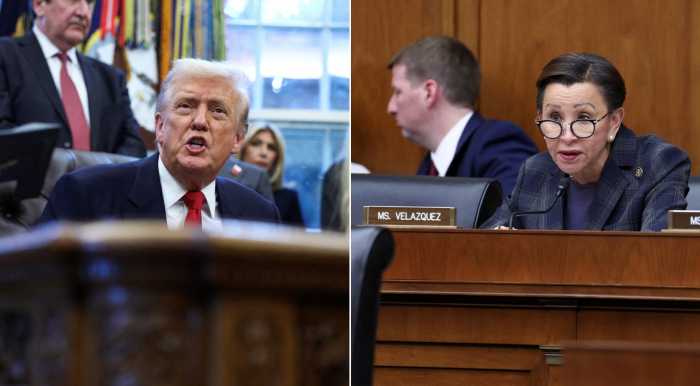
BY TEQUILA MINSKY | Yearning to see Santa? Want to avoid the crowds? Questions about the North Pole? Santa will answer them when he (re)appears at the Front Room Gallery on Saturday, December 14.
He was there last Saturday sitting amidst photos of the ruins of Wayne Hills Mall, his former staging area where he greeted delighted children from 1998-2006.
Santa is a special guest at the exhibit “Mallrat to Snapchat: The End of the Third Place,” with images by Phillip Buehler whose photos document the death of Wayne Hills Mall in Wayne, New Jersey.
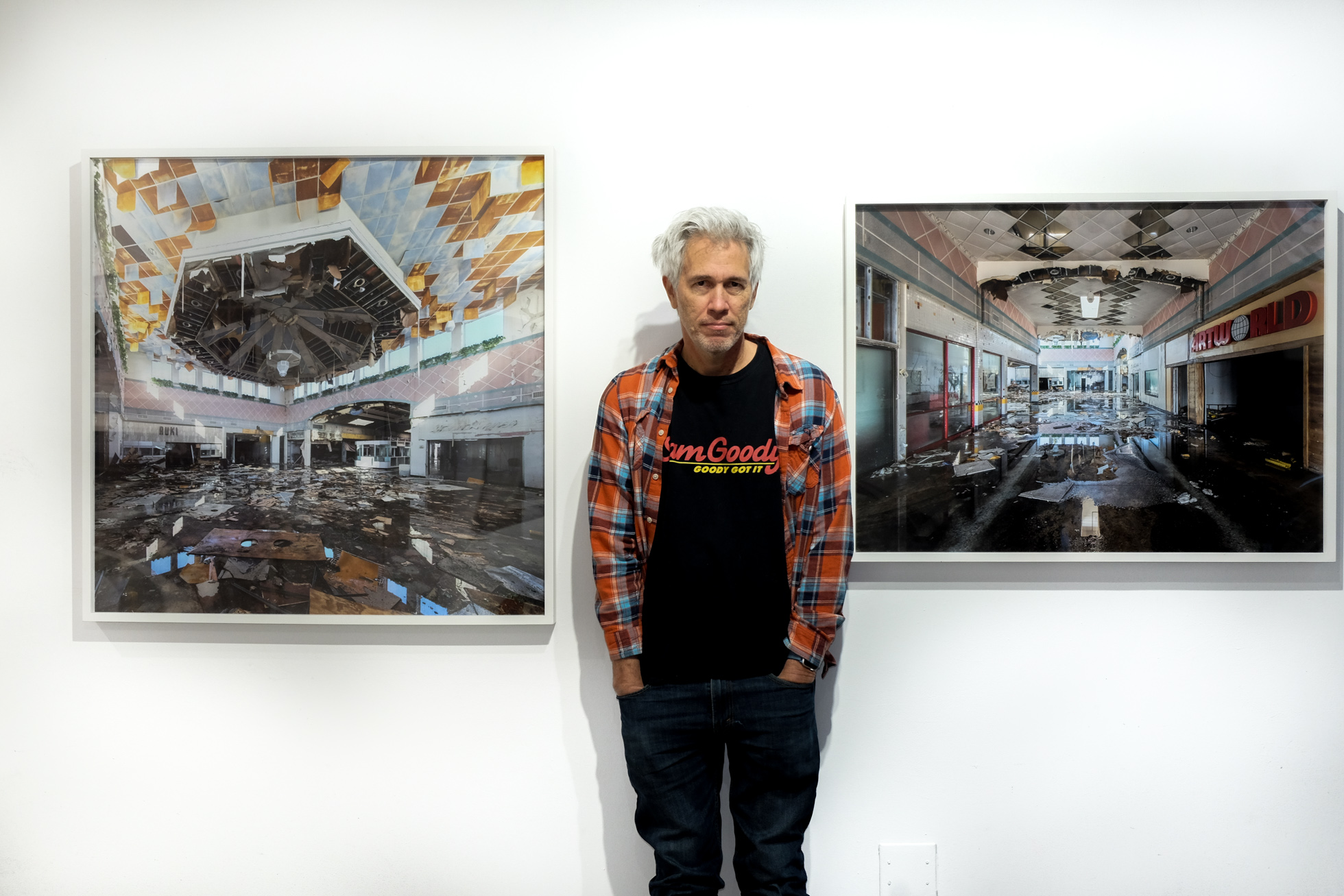
Large photographs of derelict storefronts and even larger ones of shattered, plaster-filled interiors are the main element of Buehler’s exhibit, which is part photography and part cultural critic. Part installation, a bin of vinyl LP’s of music popular in 1973 when the mall opened welcomes visitors to play their selections on the vintage turntable.
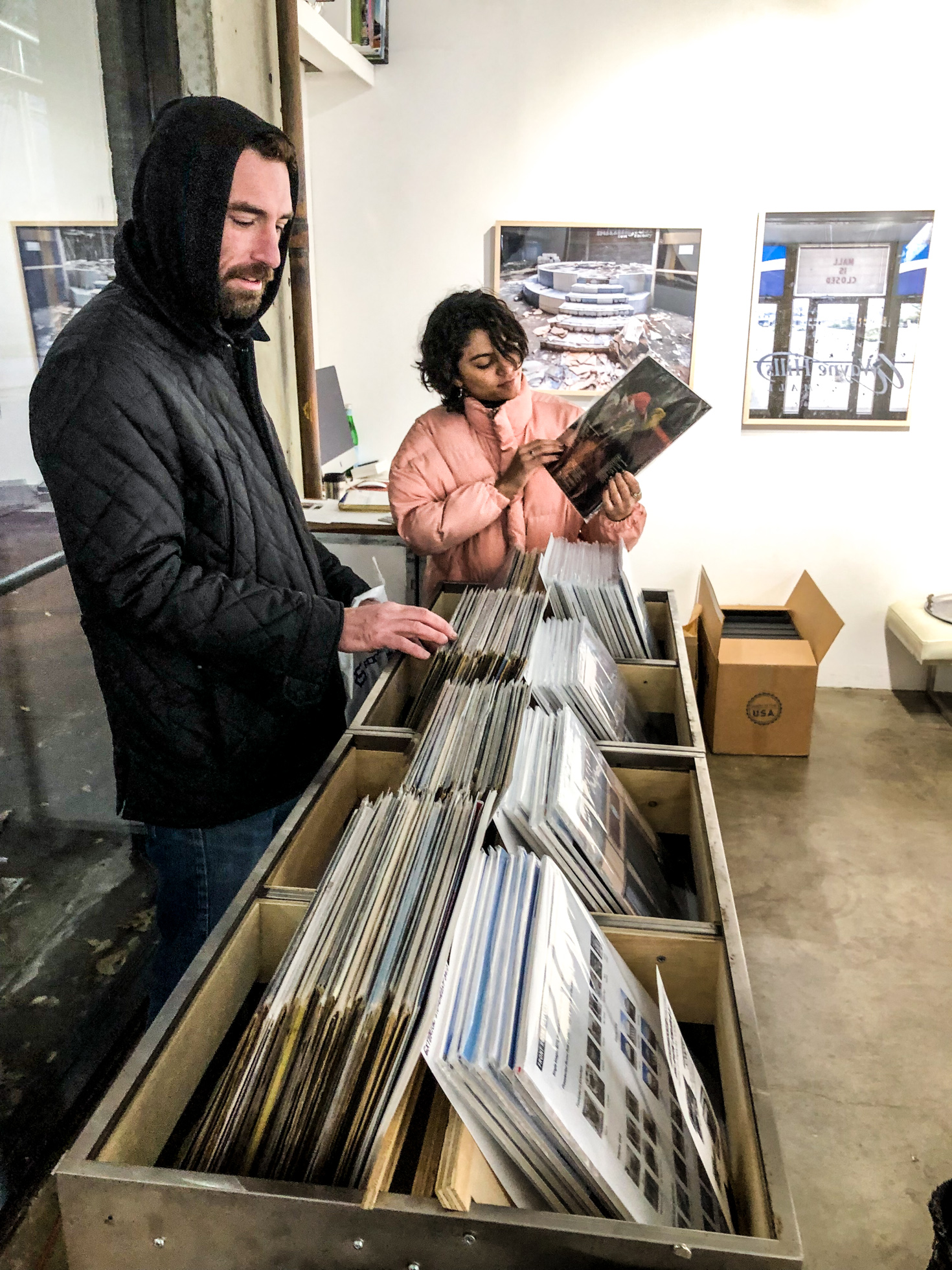
Buehler has genuine nostalgia and affection for “this very American economical and sociological experiment.” At the gallery last Saturday, Buehler, wearing his Sam Goody tee shirt, posed in front of his photo of the ruins of the Sam Goody store, where he spent a lot of money.
The exhibit’s subtitle: “End of the Third Place,” a term coined by urban sociologist Ray Oldenburg’s in 1989, refers to places where people spend time outside of home and work, hence their third place. The American mall was among many other public gathering spaces, essential to community and public life.


To a packed reception, this exhibition opened on Black Friday, a wink and nod toward what the mall represented and presumably where the suburban shopping public may have been that day.
The years between 1970 and 2010 saw the burgeoning growth of shopping malls in America. There were films set in malls. But most recently retail has changed dramatically leading to the “slow death of indoor shopping malls.”
Buehler’s photos of iconic hangouts and teenage meeting places, so familiar, are now ravaged and destroyed. The photographer doesn’t see what he does as “ruins porn,” a genre of documenting beauty in decrepitude and debris. He is hanging onto a sort of last respects, to the spirit of what was.
This Bushwick-based photographer has a number of other photography projects documenting deterioration and remnants of neglected architecture constructed in the recent past, of places that have or will disappear.
The installation includes some pages from a 1973 local newspaper supplement—the year the Wayne Hills Mall opened. “It was a time just before the Nixon impeachment hearings,” says Buehler, recognizing the historical irony.
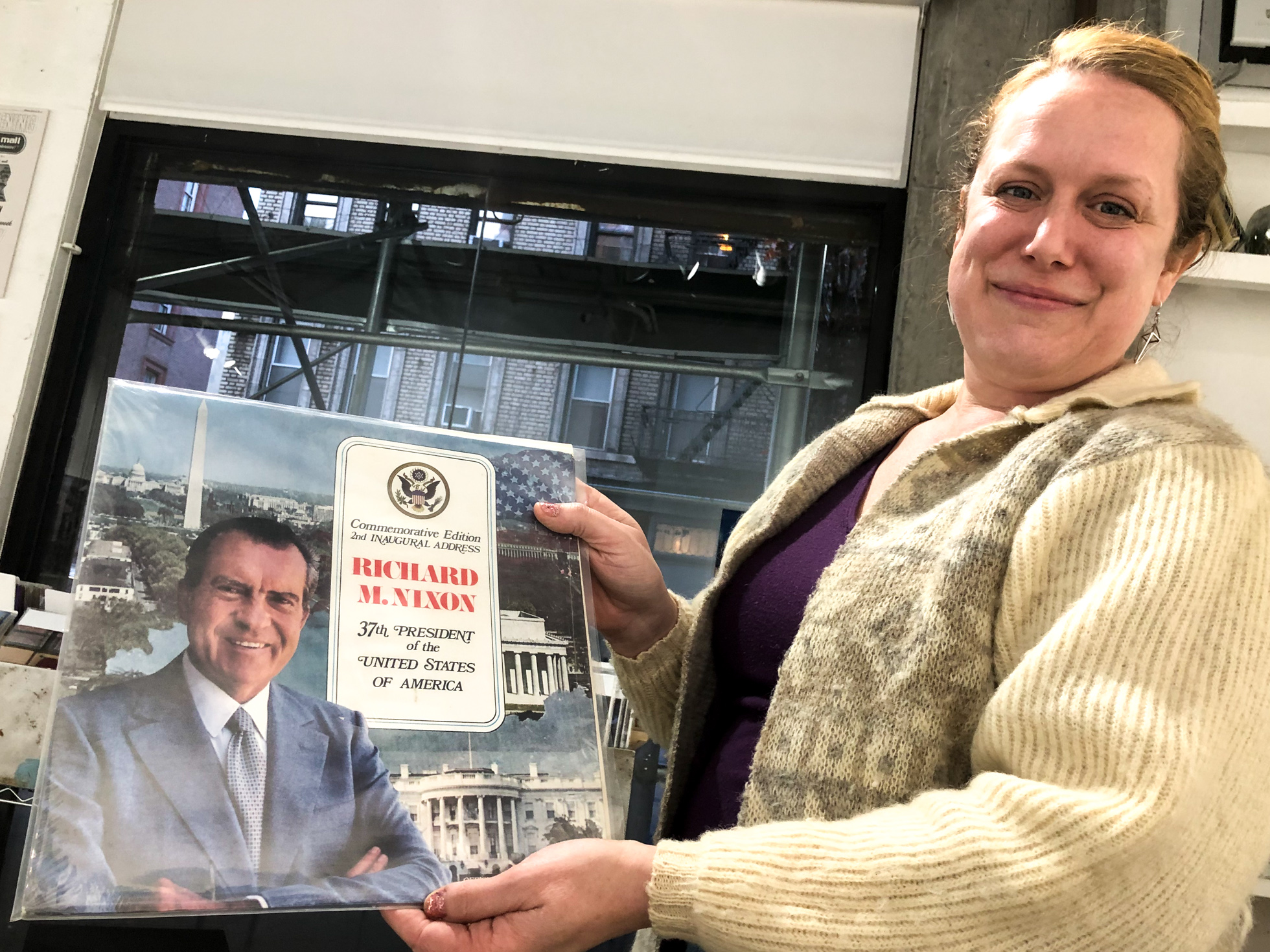
By 2006 so many of the mall’s stores had closed or moved and the very last ones left in 2014. By 2019, demolition was underway.
The Wall Street Journal’s post-Black Friday issue had a full-page feature on “A Tale of Two Malls.” In its comparison, the article reads that “top-tier malls are drawing crowds and pouring money into amenities and entertainment,” giving the example of The Mall at Short Hills, home to luxury boutiques and offering valet parking. (Hudson Yards fits this category).
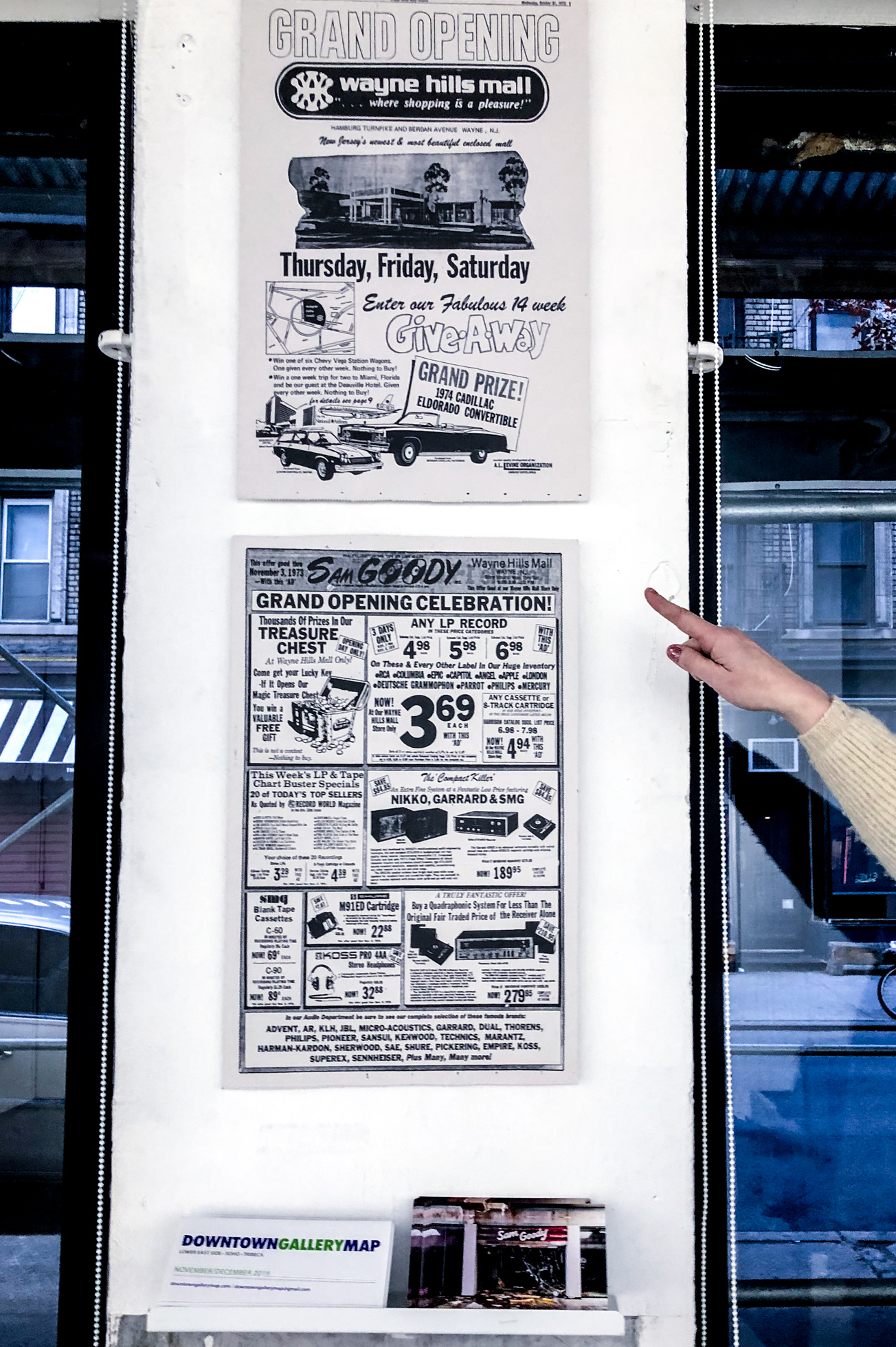
Two hours away, Atlantic City’s lower-tier The Hamilton mall has seen the closing of Sears and JC Penney and the WSJ writes that the vacancy rate for lower-tiered malls is 25% compared to 5% for top-tier malls. The demise of these sort of malls is rampant.
Front Room Gallery’s very experienced Santa —played by Dave Conley—will be on site chatting with kids and handing out candy canes at 48 Hester Street, from 1-4pm on Saturday.



